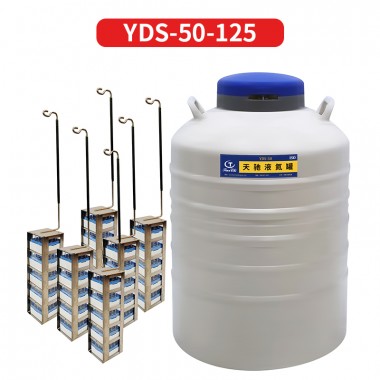In scientific research laboratories, it is often necessary to freeze and preserve some cell samples. Among many low-temperature products, liquid nitrogen tanks stand out. Not only can they maintain a low temperature of -196°C for a long time, but they will not affect cell activity. This is because the laboratory liquid nitrogen tank is made of aviation aluminum. A high vacuum interlayer is formed between the inner and outer tanks, and thermal insulation materials are added. Its advantages are light weight, low temperature resistance, thermal insulation, and reduced liquid nitrogen volatilization; it is a good thermal insulation performance cryogenic container.
When using laboratory liquid nitrogen tanks, please pay attention to:
1. The liquid nitrogen stored in the tank is -196°C. It should be stored in a cool and ventilated place to avoid direct sunlight;
2. The liquid nitrogen tank only supports filling with liquid nitrogen and cannot be filled with other liquids or gases to prevent an explosion caused by interaction with flammable substances on the container structure;
3. Liquid nitrogen is volatile, and the liquid nitrogen tank must not be sealed. Sealing will cause the volatile nitrogen to explode because it cannot be discharged; the lid cannot be left open for a long time, as the liquid nitrogen will accelerate volatilization when it comes into contact with hot air;
4. Be cautious when using and transporting, handle with care, fix firmly, avoid collisions and sudden movements;
5. The skin should not be in direct contact with liquid nitrogen, which may cause burns. Wear gloves when operating, and do not expose your hands and feet; try not to wear long shoes to avoid liquid nitrogen falling into the shoes;
6. The capacity of the liquid nitrogen tank is limited, and the liquid nitrogen will decrease with time. Liquid nitrogen must be added in time;
When using laboratory liquid nitrogen tanks, attention should be paid to the correct use and handling to ensure the smooth progress of experimental work and the safety of personnel.









